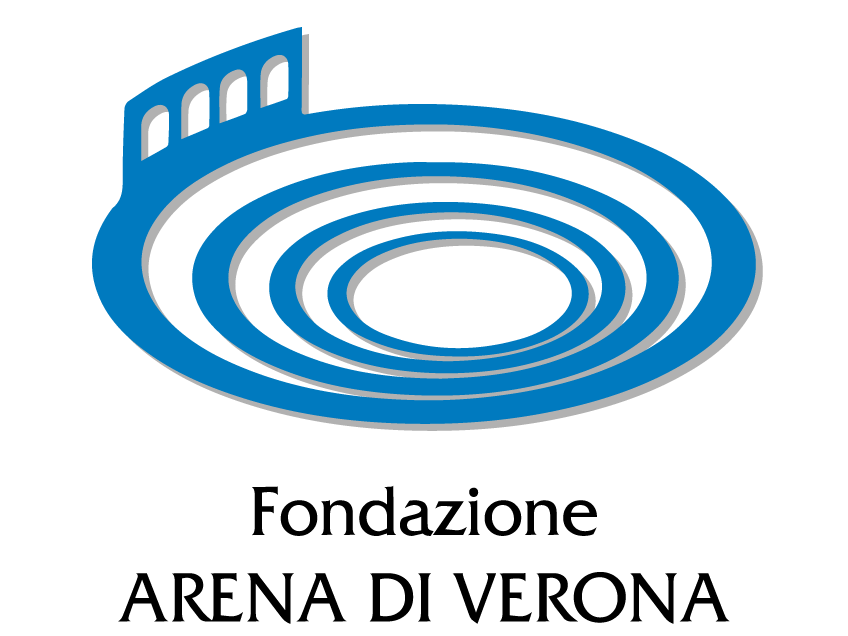

Legend
This is the accessible program booklet for Rigoletto by Giuseppe Verdi. It contains 14 pages, which can be browsed both forward and backward.
It provides audio versions of the texts, audio descriptions, and videos in ISL, International Sign Language. The texts can be easily zoomed in and out, and the contrast of the display can be increased.
The “Audio text” button plays the audio of the texts read by a male voice while the “Audio description button plays the audio descriptions of the pictures read by a female voice. The “ISL” button plays videos in International Sign Language.
By using this accessible program booklet, you give explicit consent to accessing content hosted on third party websites.
Rigoletto
by Giuseppe Verdi
Melodrama in tre parti.
Libretto by
Francesco Maria Piave
Characters
Duke of Mantua [tenor] Rigoletto, his court jester [baritone] Gilda, daughter of Rigoletto [soprano] Sparafucile, assassin [bass] Maddalena, his sister [contralto] Giovanna, Gilda's nurse [mezzo-soprano] Count Monterone [baritone] Marullo, Courtier [baritone] Matteo Borsa, Courtier [tenor] Count Ceprano [bass] Countess Ceprano, his wife [mezzo-soprano] A Court Usher [bass] A Page of the Duchess [mezzo-soprano]Courtiers, Ladies, Pages, Halberdiers

Act I
Monterone, Rigoletto, the Duke, ladies and courtiers in front of the “Ex Dogana, Trattoria”.
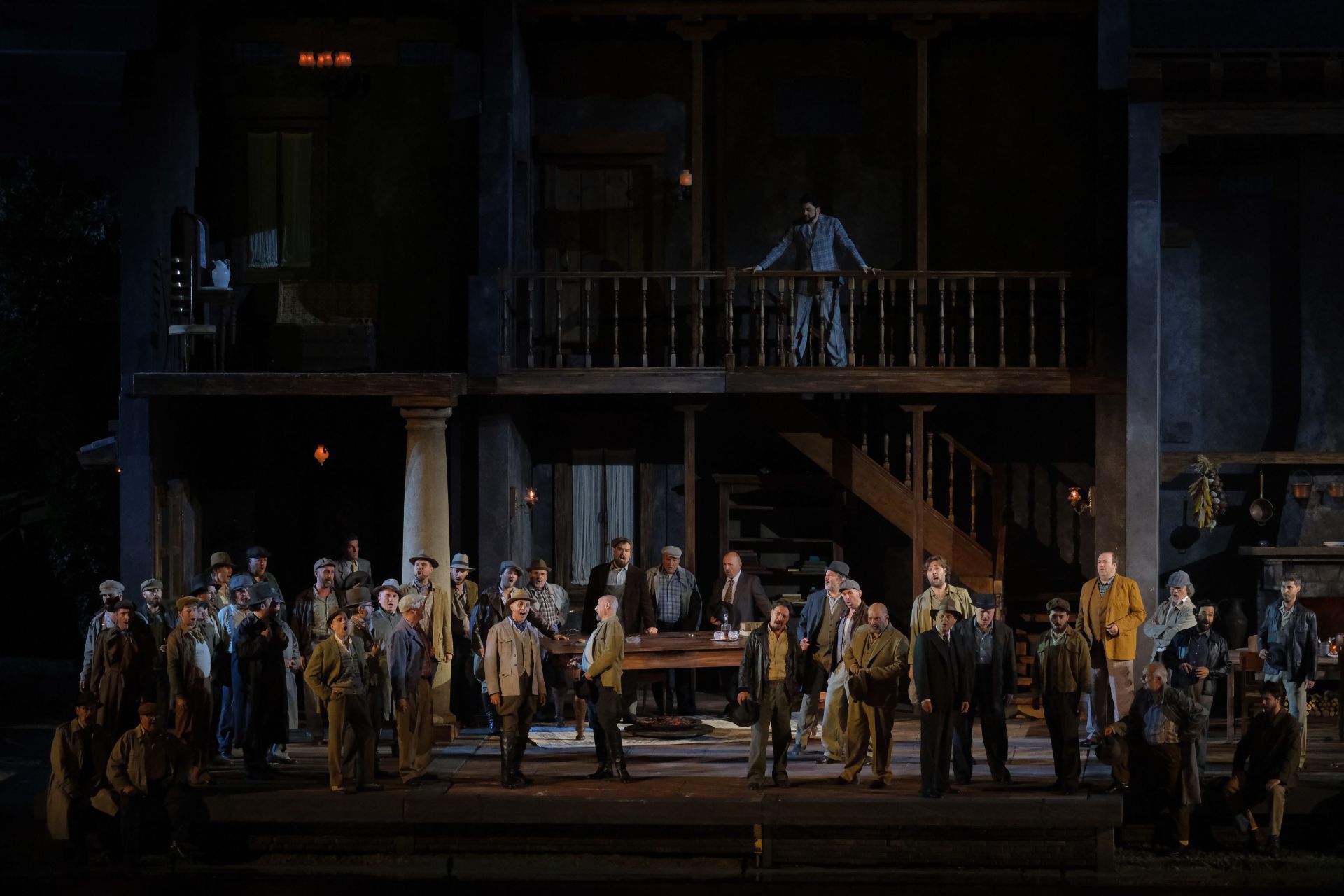
Act II
Duca, Marullo, Ceprano, Borsa and other courtiers at the Duke’s house.
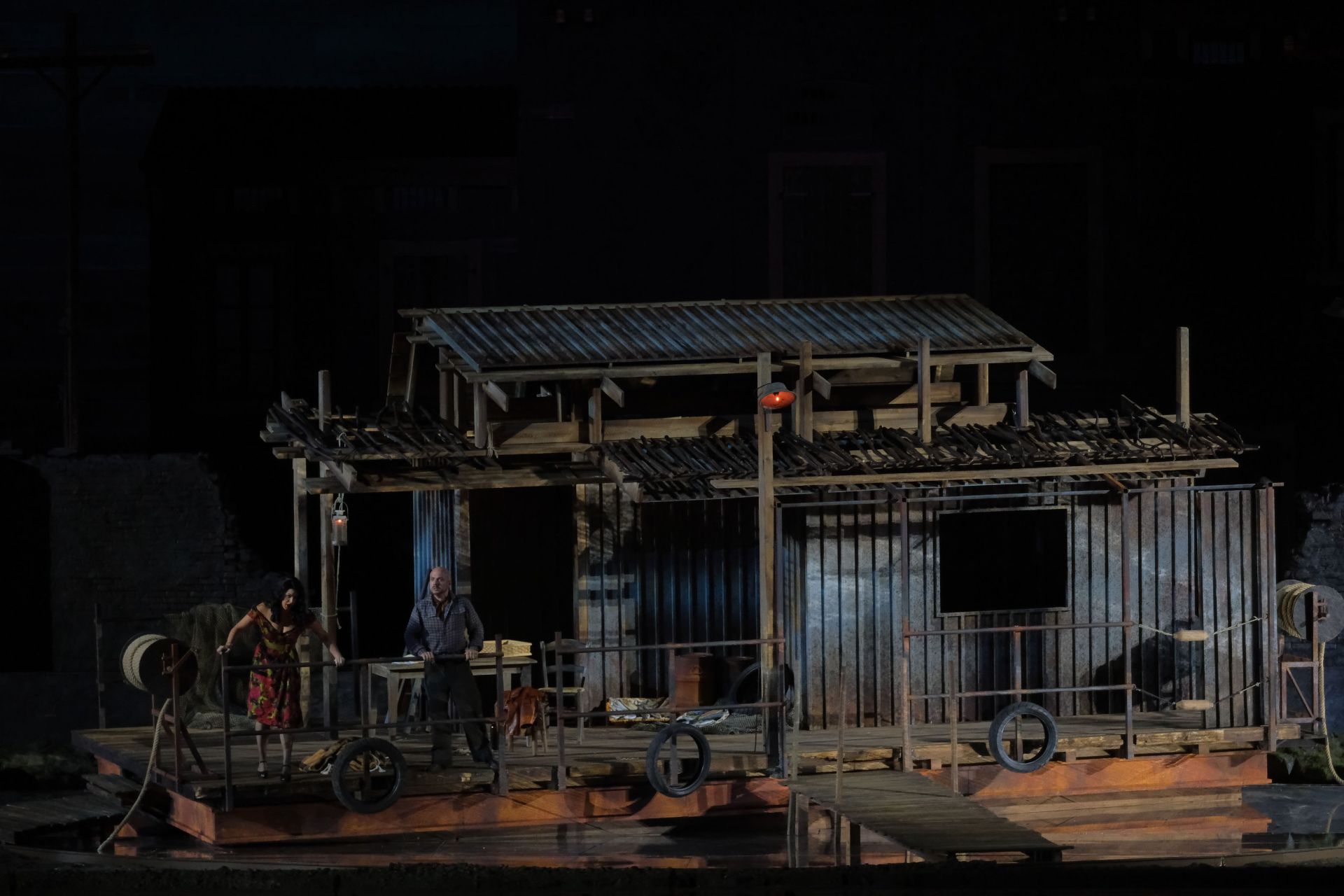
Act III
Maddalena and Sparafucile in Sparafucile’s inn/raft.
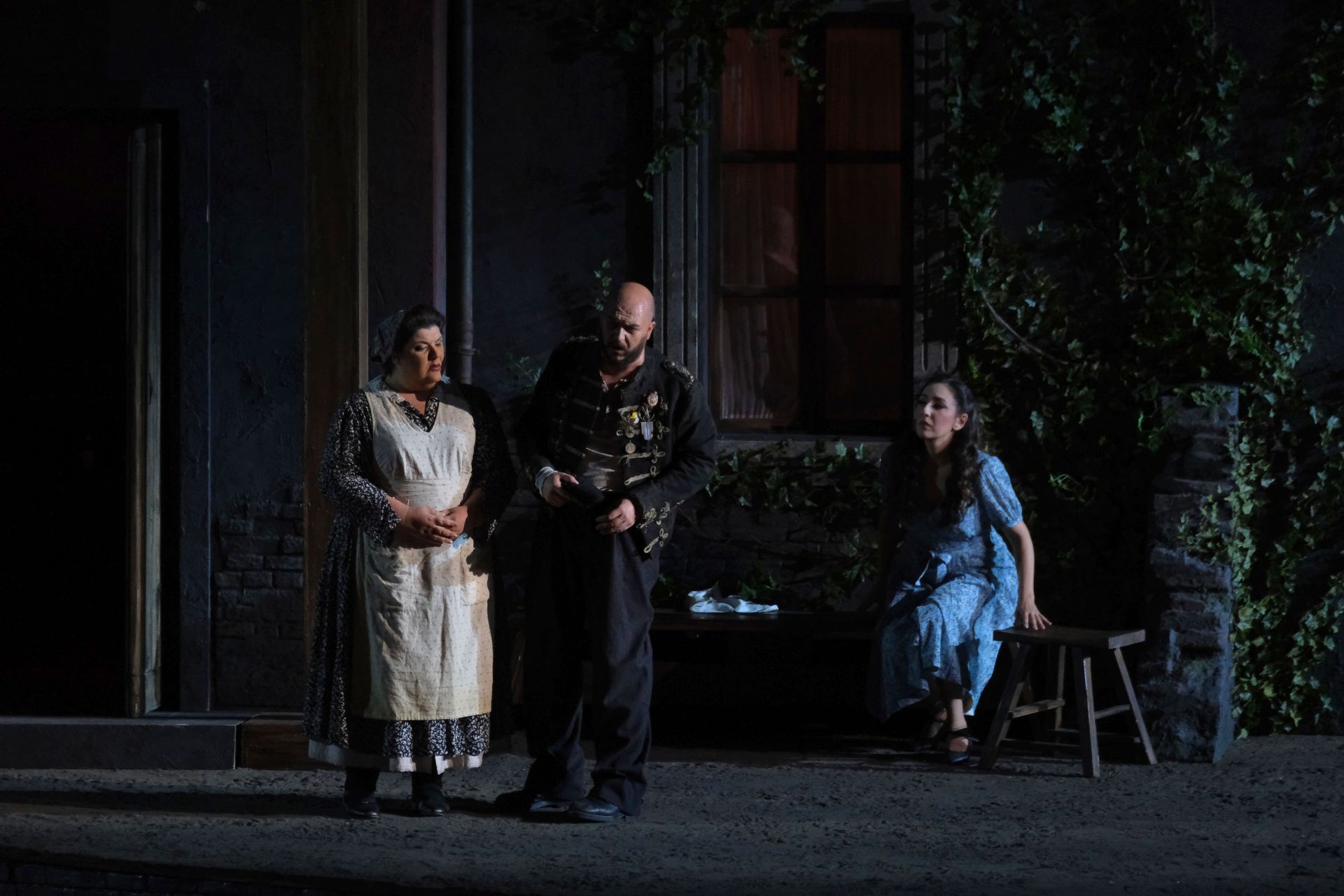
Act I
Giovanna, Rigoletto, Gilda
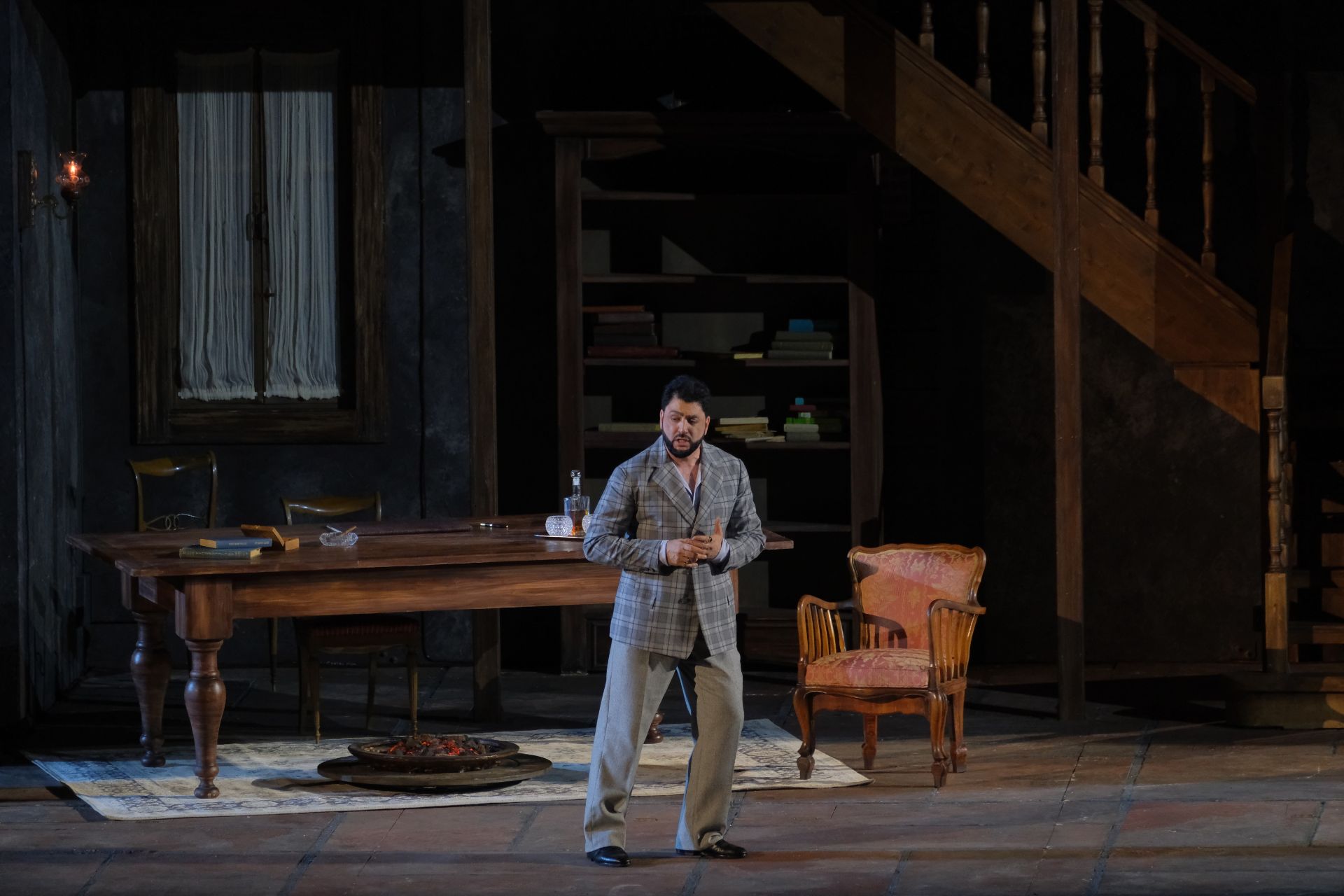
Act II
The Duke
Director’s Notes
With this production of the opera, director Antonio Albanese brings to life a world close to both the climate of the time evoked by Verdi and that of the recent past.
The opera is, in fact, set in the immediate post-war period. It is prior to the economic boom, when the suffering of war, poverty and diseases, such as cholera, were still an integral part of the lives of many Italians across most of the country.
This prevailing climate is similar to what Verdi wanted to evoke because, according to the director, “The immediate post-war period is alienating in that the memories of the war are still vivid and the void it caused is still visible. Signs of devastation and folly no different than what we find in Rigoletto”.
From a geographical point of view, the director sets the story of Rigoletto in the area of the Po Valley. It is unhealthy and stagnant, exactly like the settings for many neorealist films that documented the climate and the contradictions of post-war Italy. According to Albanese, these cinematographic associations do not betray Verdi’s message but, rather, reinforce it. In the words of the director, “Rigoletto alternates between moments of tragedy and instants of heart-wrenching and involuntary irony,” and again, “a form of comedy that, however, masks profound solitude”.
At the center of the stage stands a trattoria called Ex Dogana, paying explicit tribute to one of the settings used in the film Obsession by Luchino Visconti. Part of the scene is, instead, taken up by an outdoor cinema where a clip from the movie Beautiful, again by Visconti, is shown during the prelude. The clip shows a little girl, the daughter of Anna Magnani in the movie, who is being laughed at by the judges of a film contest. According to Albanese, in fact, “there is a subtle correspondence between this poignant scene and the characters in Verdi’s opera: between Rigoletto, the daughter and the courtiers”.
Synopsis
ACT I
A party is being held at the Ducal Palace of Mantua. The duke mentions that he wants to seduce a girl he has seen in church. In the meantime, however, he is seeking the affections of Countess Ceprano, infuriating her husband, who is mocked by Rigoletto, the court jester. The party is interrupted by the arrival of Count Monterone, who accuses the duke of having dishonored his daughter. Monterone first curses the duke and then Rigoletto. Rigoletto returns home to his daughter Gilda. The girl is entrusted to the care of Giovanna, who, however, allows the duke to enter once Rigoletto has left. The duke discovers that Gilda is the girl he had encountered in church. The duke pretends to be a student and declares his love for her, and she reciprocates. After the departure of the duke, the courtiers arrive to abduct Gilda, believing her to be the jester’s “mistress”. They trick Rigoletto into helping them, making him believe that they are carrying away Ceprano’s wife. When the old jester realizes that he has been deceived, it is too late.
ACT II
The courtiers tell the duke of their nocturnal adventure, he realizes they have taken Gilda, and he rushes off to her. Rigoletto enters, trying to appear indifferent, but he is unsettled. When it becomes clear to him that his daughter is in the duke’s chamber, he loses control and reveals that the girl is, in reality, his daughter. Gilda comes out of the duke’s chamber and seeks her father’s protection. She confesses everything: the encounter in the church, falling in love, and the pain of experiencing love for the first time in a much different manner than she imagined. While Rigoletto consoles her, Monterone is led away to prison. He gazes at the portrait of the duke and notes with bitterness that his curse did not have its desired effect. Rigoletto swears to take revenge even though Gilda begs him to forgive the duke because she still loves him.
ACT III
Rigoletto and his daughter arrive outside the inn where Sparafucile lives. He is an assassin that has offered his services to Rigoletto. The duke arrives and flirts with Maddalena, Sparafucile’s sister. Rigoletto has asked the assassin to kill the duke. The old jester orders his daughter to disguise herself as a man and to leave, and then he comes to an agreement with Sparafucile. The duke goes to bed while Maddalena tries to convince her brother to spare the young duke and urges him to kill the hunchback instead. Gilda hears everything and impulsively decides to sacrifice herself to save both the duke and her idealized concept of love. Rigoletto returns, pays what he owes Sparafucile, and carries off the sack with the body. From afar, however, he hears the duke’s voice. Desperate, he opens the sack as a flash of lighting illuminates Gilda’s face. With her dying breath, she explains what she has done and asks forgiveness. The curse has been fulfilled.


Credits
Technical implementation: Tadao Agency.
Descriptions: Elena Di Giovanni, Francesca Raffi
Videos in ISL: Monika Nawrot
Voices: Marco Quaglia (texts); Giulia Heathfield Di Renzi (audio descriptions)
Disclaimer
Copyright in these pages is owned by Fondazione Arena di Verona except where otherwise indicated by a third party's proprietary notice. These pages and the material published on them are also protected by intellectual property laws and may not be reproduced or appropriated in any manner without written permission of their respective owners.
For more information, please contact commerciale@arenadiverona.it